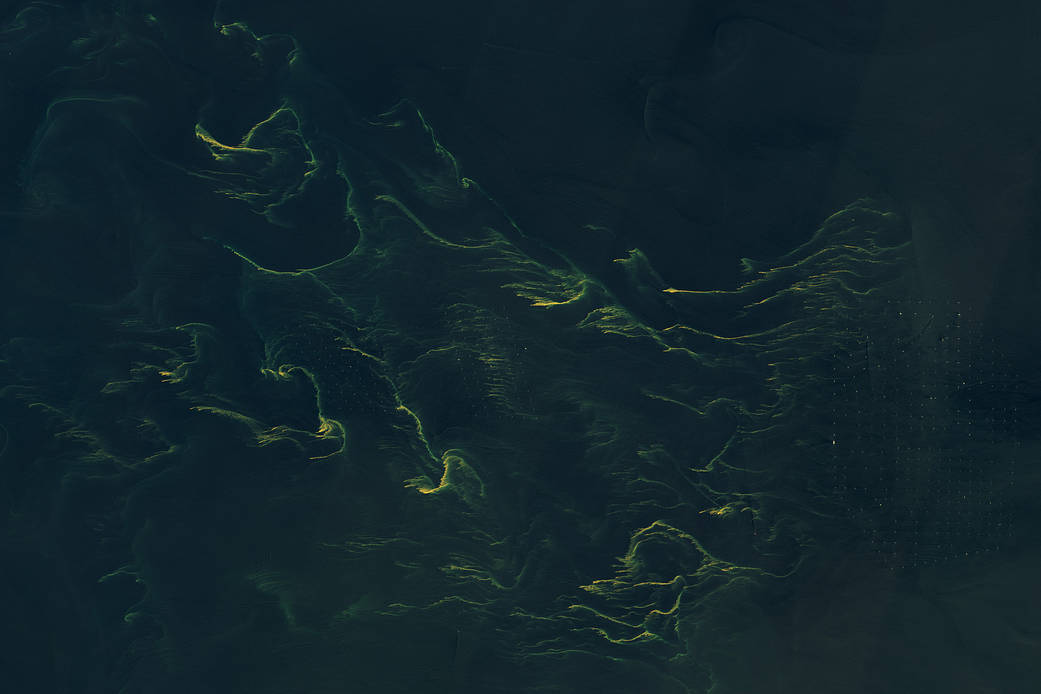As sunlight and warmth increase in the spring and summer, the North Sea starts to gain swirls and tendrils of color. Phytoplankton—tiny, plant-like organisms that often float near the ocean surface—become abundant during this time, giving the shallow water the distinctive look seen in this June 14, 2023, image from Landsat 9.
Phytoplankton turn sunlight and carbon dioxide into sugars and oxygen, and in turn, they become food for the grazing zooplankton, shellfish, and finfish of the sea. They also play an important but not fully understood role in the global carbon cycle, taking carbon dioxide out of the atmosphere and sinking it to the bottom of the ocean.
NASA’s future Plankton, Aerosol, Cloud, ocean Ecosystem (PACE) satellite mission will allow researchers to infer more information about the oceans, such as the concentration and size of particles and dissolved organic materials, the diversity of phytoplankton, and rates of phytoplankton growth.
Image Credit: NASA/Wanmei Liang; USGS
随着春季和夏季阳光和热量的增加,北海开始呈现出漩涡状和卷须状的颜色。浮游植物–经常漂浮在海洋表面附近的微小植物状生物–在这一时期变得丰富起来,使浅水区呈现出2023年6月14日陆地卫星9号拍摄的这张照片中的独特面貌。
浮游植物将阳光和二氧化碳转化为糖和氧气,反过来,它们又成为食草的浮游动物、贝类和海洋鱼类的食物。它们在全球碳循环中也发挥着重要但尚未完全了解的作用,它们从大气中吸收二氧化碳并将其沉入海底。
NASA未来的浮游生物、气溶胶、云、海洋生态系统(PACE)卫星任务将使研究人员能够推断更多关于海洋的信息,如颗粒和溶解有机物质的浓度和大小、浮游植物的多样性和浮游植物的生长速率。
影像来源:NASA/Wanmei Liang; USGS



